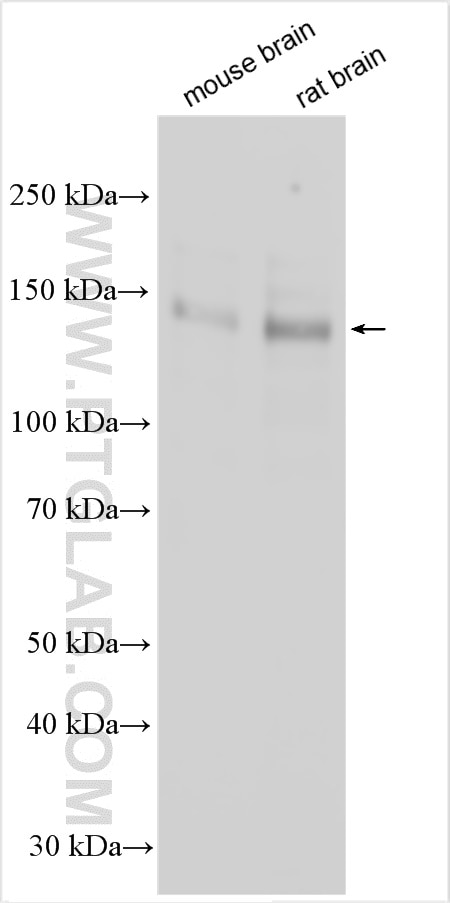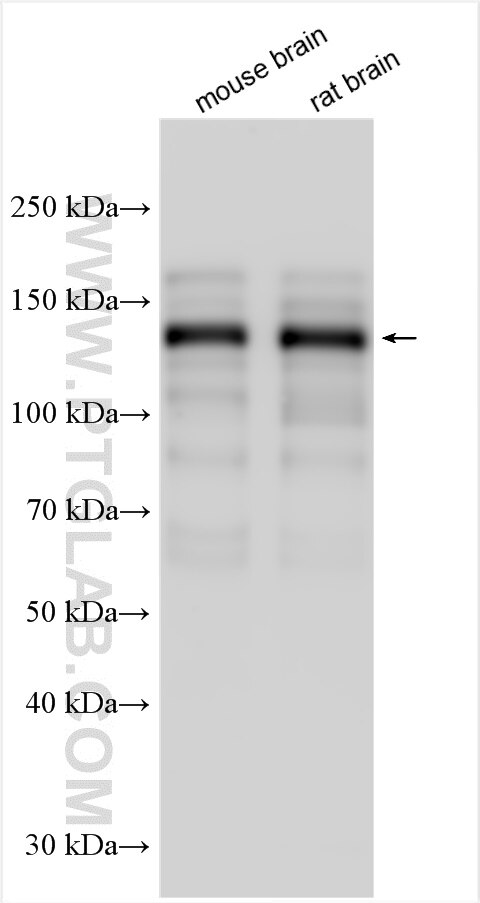MAGI2 Polyclonal antibody
MAGI2 Polyclonal Antibody for WB, ELISA
Host / Isotype
Rabbit / IgG
Reactivity
human, mouse, rat
Applications
WB, ELISA
Conjugate
Unconjugated
Cat no : 25189-1-AP
Synonyms
Validation Data Gallery
Tested Applications
| Positive WB detected in | mouse brain tissue, rat brain tissue |
Recommended dilution
| Application | Dilution |
|---|---|
| Western Blot (WB) | WB : 1:5000-1:50000 |
| It is recommended that this reagent should be titrated in each testing system to obtain optimal results. | |
| Sample-dependent, Check data in validation data gallery. | |
Product Information
25189-1-AP targets MAGI2 in WB, ELISA applications and shows reactivity with human, mouse, rat samples.
| Tested Reactivity | human, mouse, rat |
| Host / Isotype | Rabbit / IgG |
| Class | Polyclonal |
| Type | Antibody |
| Immunogen | MAGI2 fusion protein Ag18279 |
| Full Name | membrane associated guanylate kinase, WW and PDZ domain containing 2 |
| Calculated Molecular Weight | 1455 aa, 159 kDa |
| Observed Molecular Weight | 140 kDa |
| GenBank Accession Number | BC150277 |
| Gene Symbol | MAGI2 |
| Gene ID (NCBI) | 9863 |
| Conjugate | Unconjugated |
| Form | Liquid |
| Purification Method | Antigen affinity purification |
| Storage Buffer | PBS with 0.02% sodium azide and 50% glycerol pH 7.3. |
| Storage Conditions | Store at -20°C. Stable for one year after shipment. Aliquoting is unnecessary for -20oC storage. 20ul sizes contain 0.1% BSA. |
Background Information
MAGI proteins are scaffolding proteins, belonging to the Membrane-Associated Guanylate Kinase Inverted proteins of the MAGUK family. There are three members of the MAGI subfamily, MAGI-1, MAGI-2, and MAGI-3. They are comprised of 6 PDZ domains, 2 WW domains, and 1 GUK domain. They have been proven to mediate the transport and signal transduction of various G protein-coupled receptors (GPCRs) (PMID: 29625175). The antibody is specific to MAGI2.
Protocols
| Product Specific Protocols | |
|---|---|
| WB protocol for MAGI2 antibody 25189-1-AP | Download protocol |
| Standard Protocols | |
|---|---|
| Click here to view our Standard Protocols |



